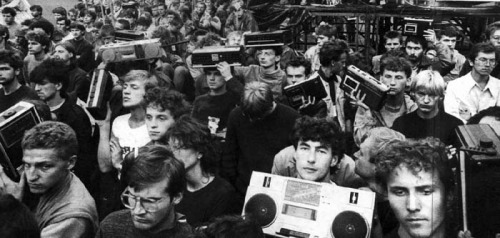
30 Jun A peek behind the Iron Curtain
Following World War II, Europe was divided into two parts from the end of 1945 to the end of the Cold War in 1991. In a tactical move by the Soviets to safeguard itself with a buffer border of countries it controlled, the West European countries were separated from those remaining under Soviet influence in the East (Bulgaria, Czechoslovakia, East Germany, Hungary, Poland, Romania, and until the 1960s Albania) by an imaginary boundary called the ‘Iron Curtain’. This was also a way of preventing citizens of Eastern bloc countries from migrating to the West.
Geographically, this stretched from the Barents Sea to the Black Sea, with the Berlin Wall and its Checkpoint Charlie serving as an important demarcation. On either side of this boundary, the states followed their own policies, developing their own international military, political and military alliances over the years.

On the Eastern side, the Soviets tried to influence various aspects of life and attempting to further Communist Propaganda – from religion and education to mass media, especially radio, film, and music. Manipulation and intimidation were the weapons of the ‘powerful’, and non-communists were often accused and tried for being spies and traitors. In those trying times, all information that was disseminated to the public was carefully controlled and monitored, with everything suited to further the Party interests.
For Poland especially, which was already impoverished, Soviet control meant looting, plundering, and the extermination of the Poles on a rampant scale. It was fairly clear from 1944, when the Soviet troops entered Polish territory, that Stalin was not about to allow the state to establish an independent government. Thus began an era of the communist seizure of power, the period of Stalinism, and a new way of life under the Iron Curtain

One of the most notorious cases was when almost 15,000 Polish officers were arrested and deported, thousands were shot and buried in a Russian forest, and others were sent to ‘special camps’. All in all, 1.2 million Poles were deported to USSR, many of whom died in captivity.
During the Holocaust, out of the estimated 5.7 million European Jews who were brutally murdered, close to three million were Polish – 90% of all the Jews in Poland. This was total war: a war of extermination, a war without rules.
Another area of concern was the Communist attempt at neutralizing the influence of the Catholic Church. This takedown of religion took the form of monasteries and seminaries being forced to close down, Catholic schools being nationalised, and worse, Catholic hospitals and charities being shut. Religious leaders were frequently faced with threats, blackmailed, persecuted, and harassed. In yet another incident, a thousand Polish priests were imprisoned in 1953, while many more were recruited by the Party to spy on other priests.
There are enough and more incidents and stories that emerged out of the Iron Curtain years.
Over the years, discontent in Poland grew, which spread to Hungary, the German Democratic Republic (East Germany), Bulgaria, Czechoslovakia, and Romania (which was the only state to violently fight and defeat the communist government).

In 1989, when the Iron Curtain was lifted at border between Austria and Hungary. One of the main reasons for this was the collapse of Communism, with the economical and ideological failures of the Communist state, and the eventual fall of the Soviet Union in 1991. The fall of the Iron Curtain also coincided with the Cold War coming to an end, which stood testament to the end of an important period in both world and European history.
Cazinoul românesc princess casino de excepție te oferă bonusuri incredibile și o gamă largă de opţiuni pentru jocurile tale favorite. Experimentează entuziasmul pur al jocurilor încercând slot-urile demo gratuit!



No Comments